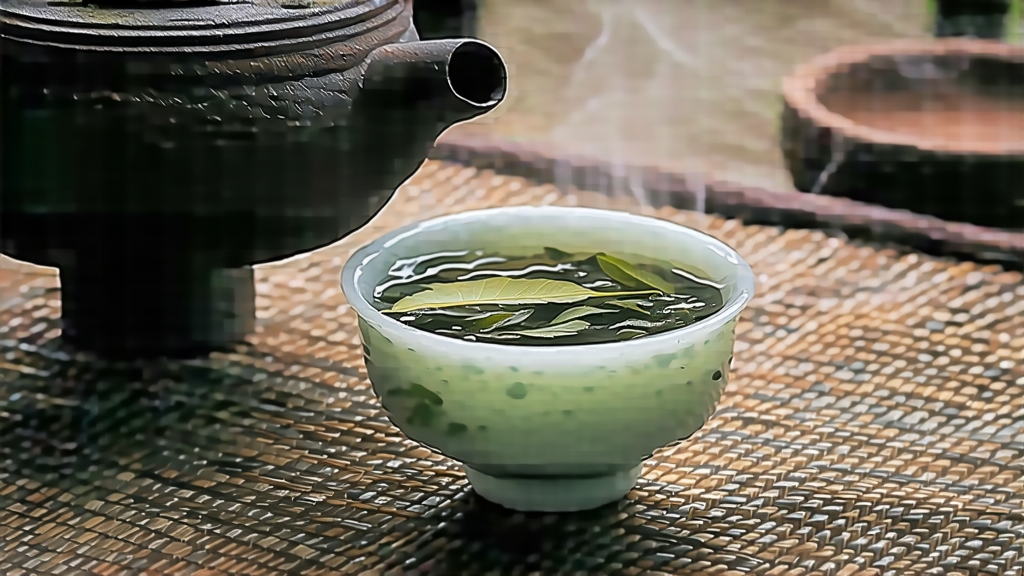
Tucked away in the humid, karst-studded southern fringe of China, Liu Bao tea has spent four centuries quietly fermenting while its more famous cousin Pu-erh soaked up the global spotlight. Named after the small administrative village of Liu Bao in Wuzhou, Guangxi, this dark, glossy leaf is the living archive of Ming-era trade routes, river coolies, and the instinctive microbiology of bamboo baskets. To international drinkers who have only just begun to explore the “dark tea” category, Liu Bao offers a softer, sweeter gateway into the world of post-fermentation, yet it carries a complexity that can rival the most venerable Pu-erh.
1. Historical footprints along the Pearl River
The story begins in the 16th century, when tea growers in the upper reaches of the Liu Bao valley discovered that a brief wilting, followed by a hot wok “kill-green” and an overnight pile-ferment, produced a tea that did not sour on the two-week raft journey down the Pearl River to Guangzhou. Packed in plaited bamboo husks known as lang, the tea absorbed the ambient humidity of river mists, continuing to ferment en route. European traders mistook it for “black tea,” but Chinese merchants knew it as hei cha—literally “dark tea”—a class defined not by leaf colour but by microbial oxidation that happens after the enzyme is destroyed. By the Qing dynasty, Liu Bao had become a currency of the coolie trade: labourers bound for Southeast Asia were paid partly in compressed bricks of the tea, valued for settling the stomach and sterilising river water. In Malaysia’s tin mines it evolved into a breakfast staple, simmered in kettles with condensed milk and poured over rice, a culinary relic still called “kopi th’ng.”
2. From six peaks to three rivers: terroir and leaf
Modern Liu Bao is produced across the six original mountain hamlets—Gongcun, Shengping, Xinyan, Yaoli, Xiangping, and Fozhi—each distinguished by subtly different soil mineral profiles. The cultivar is almost always the Guangxi large-leaf variety (Camellia sinensis var. sinensis f. macrophylla), whose cell walls are thick enough to withstand two separate fermentations without collapsing into dust. Spring picking follows the traditional “one bud three leaves” standard, but the hallmark is the summer gu yu harvest after the Grain Rain, when monsoon rains swell the leaves with alkaloids that later convert into mellow theabrownins.
3. Craft: where fire, steam, and bamboo collide
Unlike Pu-erh’s sun-drying, Liu Bao undergoes a unique “double steam” process. After plucking, the leaves are withered for four to six hours, then wok-fired at 280 °C for exactly three minutes—long enough to denature polyphenol oxidase but short enough to preserve leaf integrity. While still hot, they are piled 70 cm deep in darkened rooms where humidity hovers at 85 %. Over the next twelve hours the heap hits 55 °C, triggering a microbial bloom dominated by Aspergillus niger and Blastobotrys adeninivorans. The pile is turned every 30 minutes to prevent anaerobic spoilage, a labour-intensive rhythm that explains why small-batch Liu Bao costs more than factory Pu-erh.
Next comes the first steam: leaves are loaded into wooden barrels and blasted with 100 °C steam for 20 seconds, softening them for compression into 40 kg bamboo baskets lined with wild taro leaves. These baskets are stacked in riverside warehouses where the natural draft between bamboo slats allows a slow second fermentation lasting anywhere from one to thirty years. During this time, periodic re-steaming—every five years for premium grades—re-activates microbes and knits taro and bamboo aromatics into the leaf. The result is a tea that carries hints of betel nut, camphor, and damp rainforest earth, a profile Chinese tasters summarise as chen xiang—“settled fragrance.”
4. Grades and shapes
Liu Bao is classified by leaf grade (特级 special, 一级 first, 二级 second) and by basket age. The most sought-after lots are the pre-1973 “Three Gold Coins” bricks, stamped during China’s export drive to Hong Kong and accidentally cellared